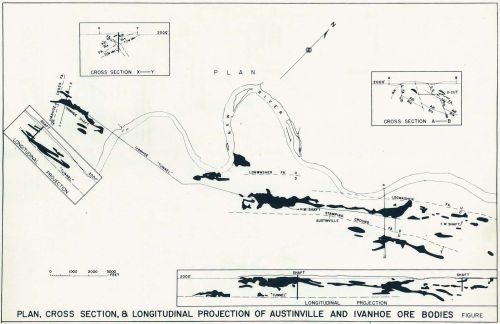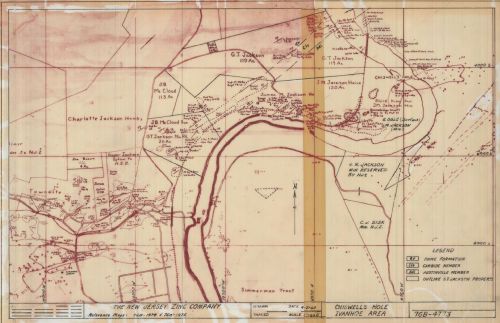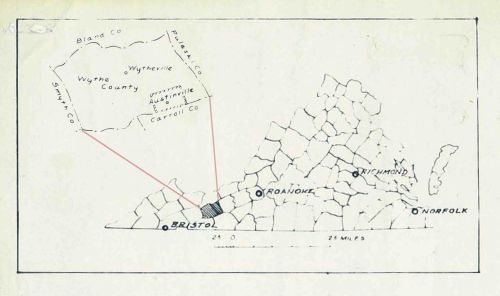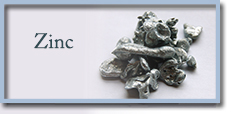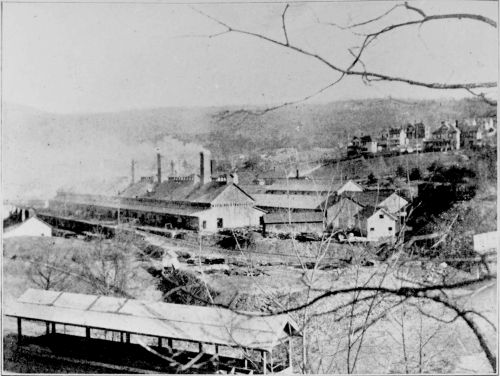
The New Jersey Zinc Company, Wythe County
In 2018, the Virginia Energy, in cooperation with USGS and funding from the National Geological and Geophysical Data Preservation Program (NGGDPP) grant, began archiving historic mining records from the Austinville mine of Wythe County in southwestern Virginia. In 2021, we concluded our preservation efforts. Currently owned and operated by the Austinville Limestone Company, this site is the oldest continuously operating mine in the United States. The history of Austinville's mineral wealth stretches back to the 1750’s, making the Austinville Mine a treasure trove of historic mining data.
The materials at Austinville Limestone Company had been left in place for decades in an old warehouse that was once where miners would hang their lunch pails and shower after working the mines. When New Jersey Zinc closed their doors, papers were left as they had been worked with, almost like a time capsule. Limestone dust covered everything in a thick white layers hidden in five rooms in the upper portion of the warehouse, inlcuding one room called "The Vault," in which many map cabinets were found full of the history of this mine.
For an interactive experience please view our ArcGIS Story Map of The New Jersey Zinc Company:
The geology of Austinville ...

The super continent, Pangea, formed about 280 million years ago when all the continents collided and then began to drift apart to form their more modern arrangement.
Credit: AAA
Where and how did the lead and zinc that have made the Austinville mine so successful originate? This question leads to the geological story behind the mine – the story of the ore. This mine, like so many others in the area, was built because an individual recognized the potential ore rock in a cave or an outcrop of rock.
In the Austinville area, the much sought after lead and zinc are found within dolostone of the Shady Formation. The Shady dolostone formed during the Cambrian period approximately 500 million years ago. At that time, the land that would become North America was submerged beneath a shallow sea.
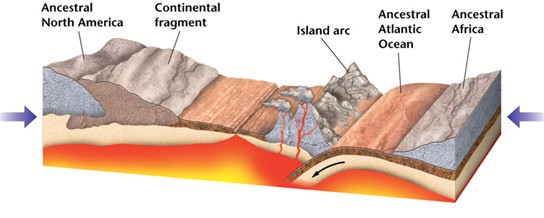
The Applachain Mountains formed during the collision of ancestral North America and Africa 300 million+ years ago.
DTM Applachian Mountain Chain of Eastern United States and Canada
Warm temperatures resulted from the continent's equatorial position, leading to the deposition of limestone in shallow marine and coastal environments. Limestone, composed of calcium carbonate (CaCO2), formed as carbonate rich sediment (such as sea shells) was physically buried, compacted, and chemically cemented into rock. Over hundreds of millions of years, this limestone rock was exposed, uplifted, folded, and faulted by the large-scale tectonic processes that also formed the Appalachian Mountains. During this time, the original limestone was altered by heat and water into dolostone (CaMg(CO3)2). The dolomite was chemically replaced in and along tiny open spaces by iron- and zinc- rich minerals such as sphalerite, galena, and pyrite. It is the abundance of these rich mineral deposits that would make the Austinville mine so productive.
Today, the Cambrian-aged Shady Dolomite is approximately 2000 feet thick in Austinville area. The iron and zinc ore exists in 10-30 feet thick tabular lenses in the middle to lower Shady Formation. These ore bodies were targeted for mining and determine the orientation and extent of the Austinville and Ivanhoe mine.
The history of the mines ...The story of the mines begins the 1756, when plantation owner Colonel John Chiswell, a member of the Colonial House of Burgesses, supposedly avoided a confrontation with native tribesmen by hiding in a cave along the New River. Here he discovered rich mineral deposits and the location was dubbed "Chiswell's Hole."
Chiswell provided the funds to dig and extract surface deposits for lead that he hoped to refine into silver. Chiswell's exploits, however, resulted in substantial debt, scandal, and ultimately resulted in his sudden death by what was suspiciously described as "…nervous fits, owing to a constant uneasiness of the mind…" in 1766 (The Papers of Thomas Jefferson, second series. Jefferson's Legal Commonplace Book, ed. Konig & Zuckert).
.jpg)
Historical marker for the mines in Wythe County, Virginia

Chiswell House
Following his death, Chiswell's property was expropriated by the State of Virginia, and operated under Charles Lynch. The Austinville site became a significant location leading up to and during the Revolutionary War. In 1774, the Austinville mine site was the meeting place for marchers to the Battle of Point Pleasant in West Virginia. In 1775, the Austinville mine was the site of the development of the Fincastle Resolutions, which argued that colonials were being denied traditional rights by the English and would resist British control in order to preserve those rights. During the war, American troops required lead for ammunition, which was produced and supplied primarily by the Austinville and other Wythe County mines. Due to it's significance, British sympathizers attacked the mine in 1780, but the attack was stifled and Lynch hanged the leaders.

Moses Austin
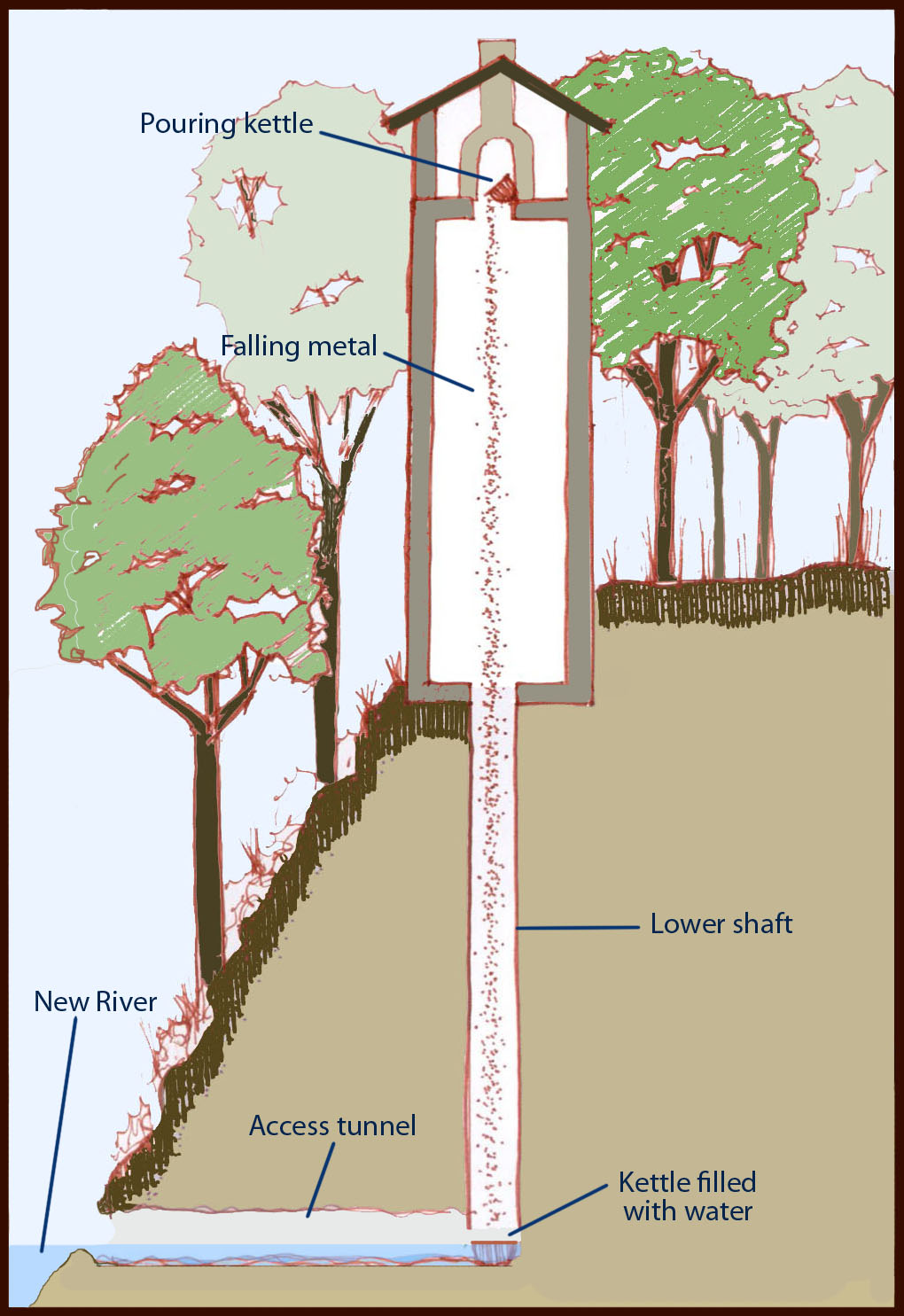
Internal workings of the lead shot towers in Wythe.
Credit DCR & Proctor, 2016.
Following the Revolutionary War, Moses Austin purchased the mine (1780 until 1800) and transformed the site from a surface quarry to a true underground mining operation. The town of Austinville, once the old Fincastle County seat, was founded and named after Moses Austin and his brother. Two shot towers and a smelter were built to make lead shot for firearms in the early 1800's by then owner and skilled mechanic, Thomas Jackson. Oxen, and possibly slave labor, supplied the muscle to hoist the lead up to the top of the towers using block and tackle. The lead was then melted in a kettle by a furnace in the top tower room. The molten lead was poured out of the kettle through a sieve at the top of the tower. Different sized sieves would produce lead shot of different diameters. As each droplet of molten lead would free-fall 150 feet to the bottom of the tower; they would become spherical, cool, and harden into small balls that were collected in large kettles of water. (wiki: https://en.wikipedia.org/wiki/Wythe_County,_Virginia) Lead shot from these towers would be ferried down the New River and sold to merchants and hunters, and eventually to Confederate troops during the American Civil War.
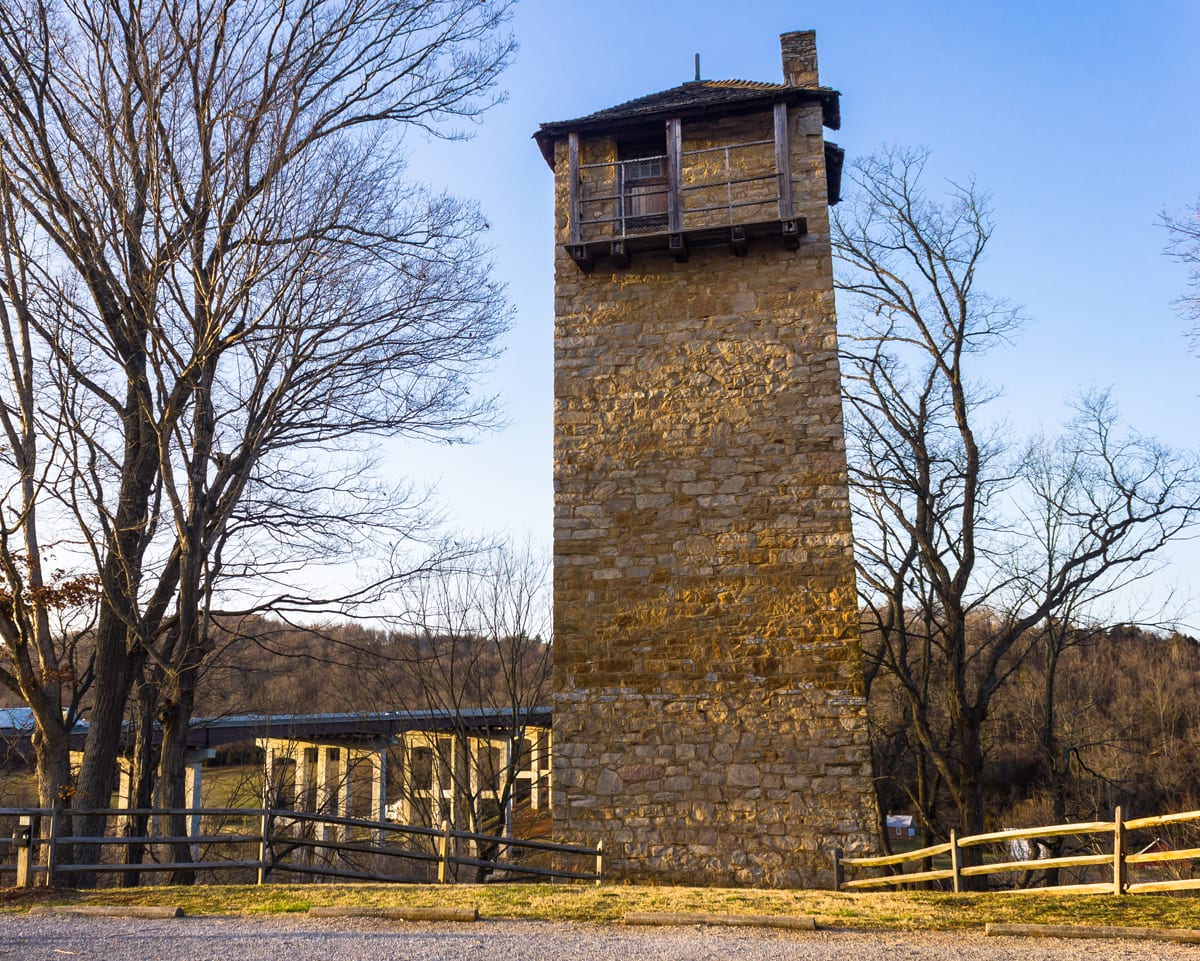
Shot Tower State Park in Wythe County where molten lead was transformed into lead shot for the American Civil War
In 1838, the Austinville location was adopted by the newly formed Wythe Lead Mines Company until a new agreement was made with the Wythe Union Lead Company in 1848 (later the Union Lead Mine Company). During the American Civil War, the Confederacy used the mine to support military operations and thus, it was burned twice, December 17, 1864 and April 5, 1865, by the Union federal cavalry. These raids destroyed portions of the washing and smelting mill, as well as the workings. Four days later, the war ended and the mine was rebuilt.
Following the war, the Bertha Mineral Company owned the mine and began using the mineral deposits to manufacture slab zinc. In 1902, New Jersey Zinc acquired the site and mined both lead and zinc. The invention of the floatation process in 1924 resulted in a rapid rise in production. The Austinville mill would use the ore to produce lead and zinc concentrates, which were shipped to a Palmerton, Pennsylvania smelting plant where they were converted to zinc metals and lead-containing zinc pigments (NJhistory.pdf). A by-product of the processing was limestone, which was also sought after and sold to regional agricultural businesses.
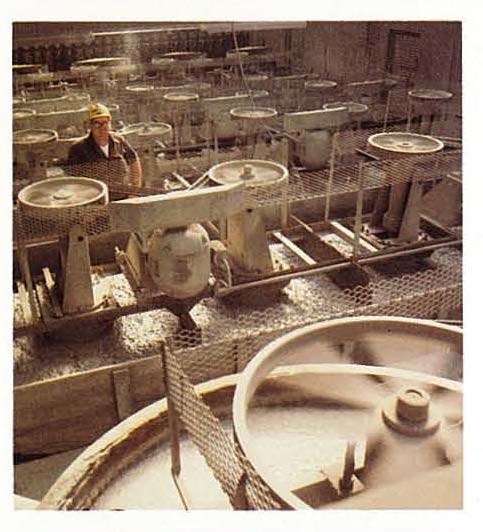
Floatation cells at the Austinville mine separated zinc and lead concentrates
from limestone and dolomite circa 1977

At its peak production, the Autinville mines hired hundreds of workers to extract lead and zinc
circa 1946-1949
The 20th century was prosperous for the Austinville Mine, and it expanded by adding an entirely new underground section, called the Ivanhoe Mine. Connected by a 13,000 foot long tunnel, these two mines were highly successful, operating for nearly 80 years and reaching peak production in the early 1970's with 200 employees, a total revenue of $13.8 million, and having processed over 1.2 million tons of lead and zinc concentrates (Foley, 2002).
In 1966, the New Jersey Zinc Company became part of Gulf + Western Industries, Incorporated and became the largest miner of zinc ore in the United States, using the horse head as its logo. By the late 1970's, Austinville had ceased underground mining due to a reduction of the lead market and improved Environmental Protection Agency standards. (Wiki: https://en.wikipedia.org/wiki/Wythe_County,_Virginia).
The James River Limestone Company purchased the mine in 1982 and produced lime for agricultural use ("aglime") from a surface quarry and the plentiful piles of tailings. In 1996, the James River Limestone Company was sold, and four employees decided to purchase the property at Austinville and continue aglime production. By 2006, the company had expanded by producing bagged and pelletized limestone for lawn and garden use, which was distributed throughout the southeastern region. In 2010, the company addressed environmental concerns by cleaning up the property and restoring 44 acres along the New River, before selling part of the site to the Virginia Department of Conservation and Recreation.
Today, one can see the old original mine site by visiting the New River Trail State Park, where over 182 acres have been protected in order to preserve the view and the historic significance of the site. Limestone tailings have been removed from surrounding properties and the area has been reclaimed as a streambed and wetland site. (The Most Recent Chapter in our History) One of the shot towers still stands as the Shot Tower Historic State Park (a portion of the New River Trail State Park). The tower has been restored and is designated as a National Historic Mechanical Engineering Landmark. The actual underground mines have filled with the water that had been continuously pumped out during its operation. The old facility still stands and has been renovated by the Austinville Limestone Company, which is currently still producing Aglime. (The Most Recent Chapter in our History)
Our collection of historic documents ...DMME began work on The New Jersey Zinc Mine Collection in the Spring of 2018, when DMME employees carefully packed up and transported a 26-foot moving truck full of historic mining documents from the Austinville Mine back to our Charlottesville office. Boxes and cabinets full of documents covered in lime dust were cleaned to reveal beautiful maps, hand written field notebooks, aerial photographs, and other documents dating back to the early 1900s related to hundreds of years of mining operations. As DMME scientists and technicians began the process of carefully cleaning, inventorying, cataloging, scanning, and creating metadata for these records, the story of the New Jersey Zinc Company unfurled.

Historic materials, Austinville Limestone Company, 2018
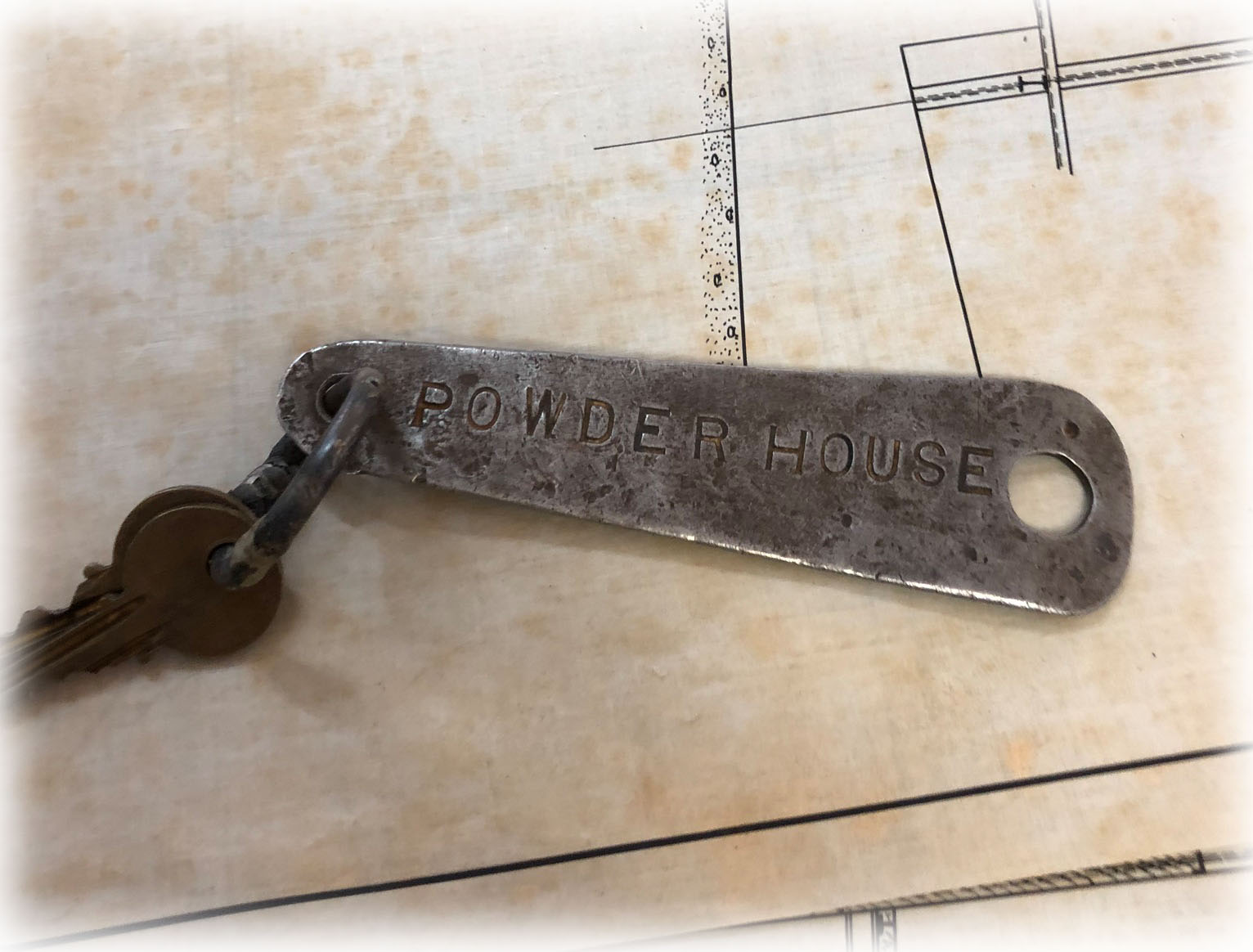
Learn more about Historic Mining in Virginia ....
Mining in Virginia has taken place in one form or another since man’s initial habitation of the land. Over 50 minerals have been mined in Virginia, contributing greatly to the state’s economy but also sometimes causing adverse impacts on the public’s health and safety, and the environment.
Historically, Virginia lead deposits played important roles in both the Revolutionary and Civil wars. Important deposits mined for lead to make bullets were located near Austinville, in Wythe County.
Zinc has been mined in Virginia since the 1870s. The most important deposit of the zinc-lead ores within the Shady Dolomite is the Austinville-Ivanhoe group of ore bodies in Wythe County.
Limestone Mining Today
In Virginia, limestone, dolostone, sandstone, quartzite, granite, gneiss, basalt, greenstone, aplite, slate, and marble are all quarried for use as crushed stone. Some of Virginia’s limestone production is also processed for making cement and lime. Mine safety dust is also produced from limestone quarried in southwest Virginia. This dust is applied to the roof, walls and floor of coal mines to prevent explosions and to improve general visibility within the mines.
Selected References:
Foley, Nora, and Robert R. Seal II, 2002, A Geoenvironmental Lifecycle Model: The Austinville Platform Carbonate Deposit, Virginia, USGS Open-File report 02-195
Whisonant, Robert C., 1996, Geology and the Civil War in Southwestern Virginia: The Wythe County Lead Mines, Virginia Minerals Vol 42, No. 2.

